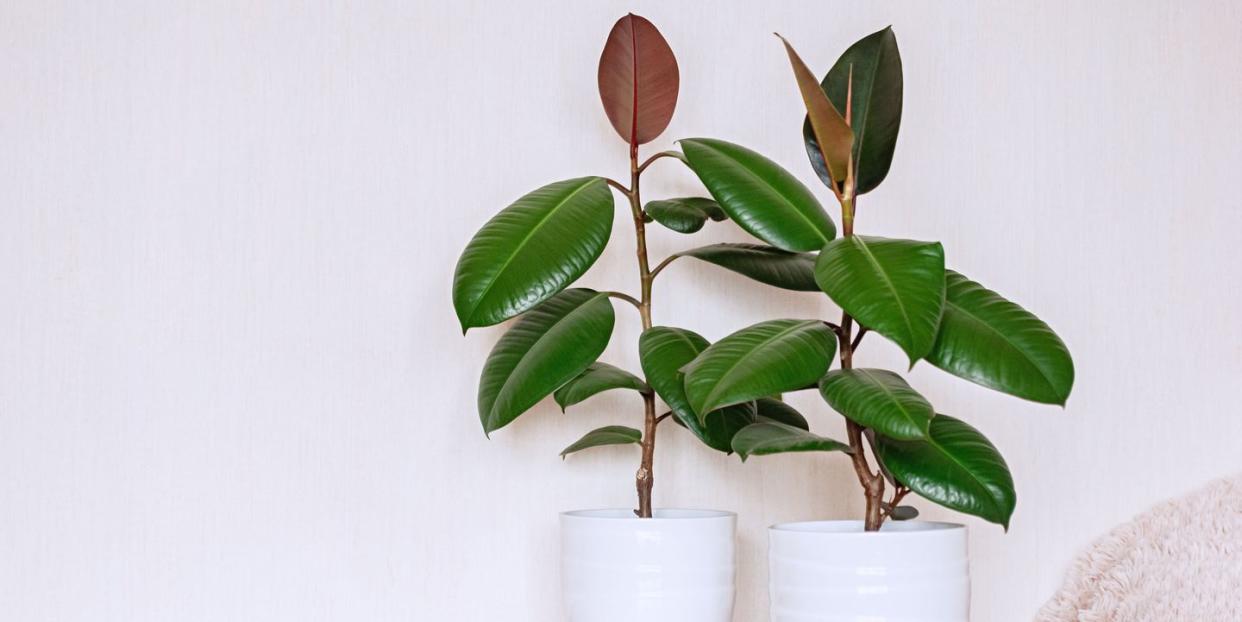Help Your Rubber Tree Thrive with These Expert Tips

No green thumb? No problem. There are lots of great houseplants out there, and the rubber tree is an easy one to start with. Its glossy, leathery leaves and upright form will add a nice splash of green to any space in your home with good light. Travel to the jungles of India and Malaysia, where their milky sap has been used to make rubber (hence the name!), and you'll find rubber trees up to 100 feet tall. But indoors their height tops out at 6 to 10 feet. With the right sunlight, water, and care, they'll grow quickly and can live 15 years or more, with long-lasting benefits for you. Read on to find out just how low maintenance the rubber tree is and what you'll need to keep yours happy and thriving. Once you have its care down, consider adding a similarly easy-to-care-for snake plant or spider plant to your collection too.
What kinds of rubber trees can I grow?
The rubber tree, also known by its scientific name 'Ficus elastica,' is available in different varieties. ‘Decora’ has the classic dark green leaves with white ribs. ‘Doescheri’ is a pretty variegated variety. ‘Rubra’ has pretty burgundy leaves. No matter which one you choose, though, they all need similar care.
Where can I buy a rubber tree?
Because it’s an old favorite, you’ll find rubber trees at most nurseries, big box stores, and online retailers. If shopping in person, don't buy plants without lower leaves, which drop off if it’s been overwatered or otherwise stressed. Also, choose one that is glossy and upright, not falling over. They're relatively inexpensive compared to other houseplants of similar size, such as the fiddle-leaf fig or the ficus tree, also called weeping fig.
Rubber trees need bright light.
Rubber trees like bright light, although they can adjust to lower light levels. They don’t like sudden drops in temperature, so don’t put them too close to drafty windows. If your room seems dark, get a grow light to provide overhead light so the plant can grow upright. Otherwise, they tend to get leggy as they stretch toward the light. It's not necessary but if you decide to put them outdoors in the summer, keep them out of direct sunlight. Bring them indoors again before a frost. In USDA Hardiness zones 10 and 11 (find your zone here), you can leave your plants outdoors unless freezing weather is forecast.

It's easy to care for your rubber tree.
The great news is that rubber trees don't need a lot of fussing over. Water your rubber tree when the soil is slightly dry to the touch. Watering too often may cause leaf yellowing. Dump out the saucer beneath the pot so there's no standing water. If you like, feed your rubber tree with a general-purpose fertilizer at 1/4 to 1/2 strength a few times a year, especially during active growth in spring and summer. Or not! It's really not necessary but certainly won't hurt.
Is rubber tree safe around pets?
The sticky sap may irritate a pet's skin or tummy, so it’s best to keep this plant away from curious pets who like to nibble on houseplants. To keep your rubber tree clean and shiny, dust the broad leaves with a damp rag occasionally. Rubber trees rarely are affected by bugs or diseases, so they’re the perfect plant for you to sit back and enjoy without a lot of fussing.
You Might Also Like

 Yahoo News
Yahoo News 
